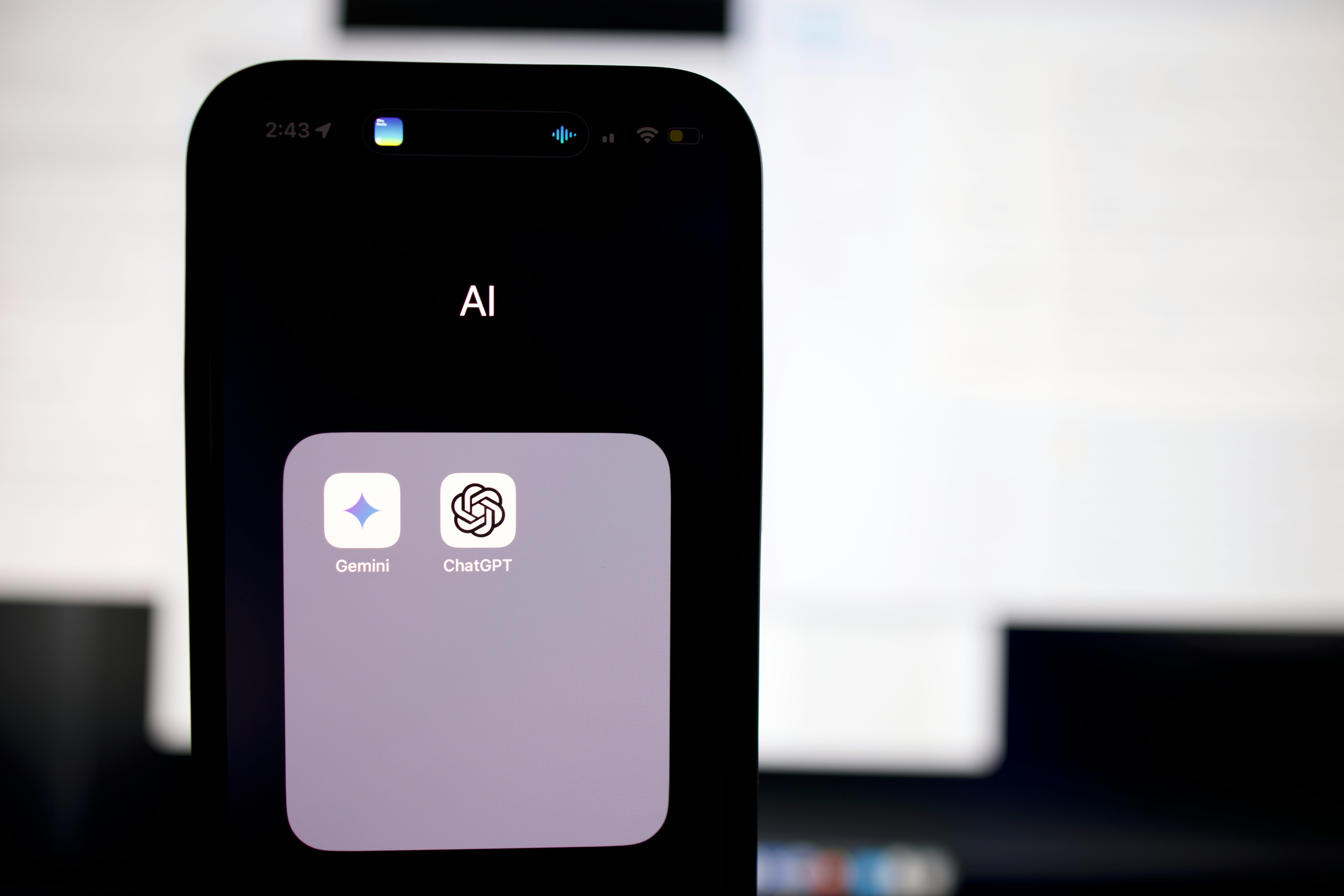As we navigate through 2024, the world of technology continues to evolve at a breakneck pace, reshaping our lives in ways we could only dream of a few years ago. From AI that can create content rivaling human creators to immersive virtual experiences that blur the line between digital and physical realities, our technological landscape is transforming before our very eyes. Let's dive deep into the hottest tech topics of the year and explore what they mean for our present and future.
Artificial Intelligence
Artificial Intelligence, particularly Generative AI, has taken center stage in 2024, captivating both tech enthusiasts and the general public alike. But what exactly is Generative AI, and why is it causing such a stir?
Imagine having a virtual assistant that can not only answer your questions but also write a novel, compose a symphony, or design a logo, that's what Generative AI has to offer. It's a subset of AI that can create new content, whether that's text, images, music, or even code. Unlike traditional AI systems that are designed to recognize patterns or make predictions based on existing data, Generative AI can produce entirely new, original content.
The buzz around Generative AI has reached fever pitch this year because it's fundamentally changing how we work and create. Companies like OpenAI, with their ChatGPT, have shown us glimpses of a future where AI can be a powerful collaborator in creative and analytical tasks. Journalists are using AI to help draft articles, getting a head start on research and how they structure their pieces. Marketers are leveraging it for content creation, generating ideas for campaigns and even writing social media posts. Software developers are using it to streamline coding processes, with AI suggesting code snippets and even debugging.
But the impact of Generative AI goes beyond just improving efficiency. It's opening up new possibilities for creativity and innovation. Artists are using AI-powered tools to create digital artwork that pushes the boundaries of traditional aesthetics. Musicians are experimenting with AI-generated melodies and harmonies, creating unique soundscapes. Even in fields like scientific research, Generative AI is being used to propose new hypotheses and experimental designs.
However, with these exciting possibilities come new challenges. The rise of Generative AI has sparked debates about copyright and intellectual property. If an AI system creates a piece of art or writes a story, who owns the rights to that creation? There are also concerns about the potential for misuse, such as the creation of deepfakes or the spread of AI-generated misinformation.
Looking ahead, we can expect Generative AI to become more sophisticated and integrated into our daily lives. In the near future, we might see AI co-authors on books or AI-assisted movie scripts becoming commonplace. We could have AI personal assistants that can not only manage our schedules but also draft our emails and reports in our personal writing style.
Further down the line, we could be looking at AI systems that can innovate and solve complex problems in fields like scientific research or urban planning. Imagine an AI that can analyze vast amounts of climate data and propose innovative solutions for mitigating climate change, or one that can design more efficient and sustainable city layouts.
However, as Generative AI becomes more powerful, we'll need to grapple with important ethical questions. How do we ensure that AI-generated content is used responsibly? How do we preserve human creativity and jobs in a world where AI can produce content at scale? These are questions that technologists, policymakers, and society at large will need to address as we move forward.
Virtual Reality and Augmented Reality
Virtual Reality (VR) and Augmented Reality (AR) have come a long way from being niche technologies primarily associated with gaming. In 2024, these immersive technologies are reshaping how we work, learn, and interact with the world around us.
To understand the impact of these technologies, it's important to distinguish between them. Virtual Reality immerses users in a completely digital environment, typically through a headset that blocks out the physical world. Augmented Reality, on the other hand, overlays digital information onto the real world, often through smartphones or specialized glasses.

Photo by Michelangelo Buonarroti / Pexels
This year, VR and AR have gained significant traction because they're becoming more accessible and practical. Improvements in hardware have made VR headsets lighter, more comfortable, and more affordable. Meanwhile, advancements in AR have made it possible to create more realistic and interactive digital overlays.
These technologies are finding applications far beyond entertainment. In the real estate industry, agents are using VR to offer virtual property tours, allowing potential buyers to explore homes from the comfort of their own living rooms. This not only saves time for both agents and clients but also expands the reach of real estate companies, allowing them to cater to out-of-town or international clients more effectively.
In education, AR is bringing textbooks to life, allowing students to interact with 3D models of complex concepts. Imagine a biology student being able to explore a virtual 3D model of a cell, zooming in to examine organelles up close. Or a history student using AR to overlay historical information on modern-day locations, bringing the past to life in a vivid and engaging way.
The healthcare industry is also benefiting from these technologies. Surgeons are using AR to overlay critical information during operations, improving precision and reducing the risk of errors. VR is being used in therapy, helping patients overcome phobias or manage chronic pain through immersive, controlled experiences.
In the business world, VR is revolutionizing remote work and collaboration. Virtual meeting spaces allow team members from around the globe to come together in a shared digital environment, making remote interactions feel more personal and engaging than traditional video calls.
The future of VR and AR is exciting and full of potential. In the short term, we'll likely see more businesses adopting these technologies for training and collaboration. Imagine new employees being trained in complex procedures using VR simulations, allowing them to practice in a safe, virtual environment before tackling real-world challenges.
Looking further ahead, AR could become as commonplace as smartphones, with AR glasses providing real-time information about our environment. Picture walking down a city street and seeing navigation directions overlaid on the pavement, or looking at a restaurant and instantly seeing reviews and menu information. In education, we might see classrooms where students can take virtual field trips to ancient civilizations or distant planets, making learning more immersive and engaging than ever before.
However, as with any transformative technology, there are challenges to address. Privacy concerns arise as AR devices capture and process more information about our surroundings. There's also the risk of digital addiction and the need to balance our time between virtual and physical realities. As these technologies become more prevalent, society will need to establish norms and regulations to ensure they're used in ways that benefit rather than harm individuals and communities.
Cybersecurity
As our lives become increasingly digital, cybersecurity has evolved from a unique IT concern to a critical issue that affects individuals, businesses, and nations alike. In 2024, it's not just about protecting our email accounts anymore, instead, it's about safeguarding our entire digital identities, from our smart home devices to our cryptocurrency wallets.
Cybersecurity is a hot topic this year due to the rising sophistication and frequency of cyber threats. We're seeing more targeted attacks, ransomware incidents, and data breaches that affect millions. The Colonial Pipeline attack in 2021 showed us how vulnerable our critical infrastructure can be, and similar threats continue to evolve and multiply.

Photo by Saksham Choudhary / Pexels
One of the biggest challenges in cybersecurity is the constant cat-and-mouse game between security professionals and cybercriminals. As soon as a new security measure is implemented, hackers are working to find ways around it. This has led to a shift in cybersecurity strategy, moving from a purely defensive posture to a more proactive, intelligence-driven approach.
Artificial Intelligence and Machine Learning are playing an increasingly important role in cybersecurity. These technologies are being used to analyze vast amounts of data to detect anomalies and potential threats in real time. They're also helping to automate routine security tasks, allowing human experts to focus on more complex challenges.
Another trend we're seeing is the rise of "zero-trust" security models. This approach assumes that no user or system should be automatically trusted, even if they're within the organization's network. Every access request is verified, regardless of where it originates from. This helps to prevent the spread of attacks if a single point in the network is compromised or breached.
The Internet of Things (IoT) has also brought new cybersecurity challenges. With everything from refrigerators to industrial machinery now connected to the internet, the potential attack surface for cybercriminals has expanded dramatically. Securing these devices, many of which were not designed with strong security in mind, has become a major focus for cybersecurity professionals.
Looking to the future, we can expect cybersecurity to become even more critical. In the near future, we'll likely see more emphasis on user education and awareness. As sophisticated as our technical defenses may become, human error remains one of the biggest vulnerabilities in any system. Companies and organizations will invest more in training their employees to recognize and respond to cyber threats.
We're also likely to see increased regulation around cybersecurity, particularly for critical infrastructure and industries that handle sensitive data. Governments around the world are recognizing the need for stronger cybersecurity measures and are implementing laws and guidelines to ensure organizations meet certain security standards.
Ultimately, as our world becomes more digital, cybersecurity will need to be integrated into every aspect of our technology. It's not just an IT issue anymore but a fundamental part of how we design, build, and use digital systems.
Machine Learning
While often lumped together with AI, Machine Learning deserves its own spotlight. It's the technology that allows systems to learn and improve from experience without being explicitly programmed. In 2024, Machine Learning is the quiet powerhouse behind many of the smart technologies we interact with daily.
At its core, Machine Learning is about pattern recognition and prediction. ML algorithms are fed large amounts of data, from which they can identify patterns and use these to make predictions or decisions about new data. This ability to "learn" from data makes ML incredibly powerful and versatile.

Photo by Pavel Danilyuk / Pexels
Machine Learning has gained prominence because it's making our technology smarter and more personalized. It's the reason why your music streaming service seems to know your taste so well, or why your smart thermostat can predict when you'll be home. These systems are constantly learning from your behavior to provide a more tailored experience.
In the business world, ML is being used to optimize operations and make better decisions. Retail companies are using ML algorithms to predict inventory needs and optimize supply chains. Financial institutions are using ML for fraud detection, analyzing transactions in real time to identify suspicious activity.
One of the most exciting applications of Machine Learning is in healthcare. ML algorithms are helping to diagnose diseases earlier and more accurately than ever before. For example, ML models have been developed that can detect signs of breast cancer in mammograms with accuracy comparable to human radiologists. In drug discovery, ML is being used to predict which chemical compounds are most likely to be effective against certain diseases, dramatically speeding up the development process.
Machine Learning is also playing a crucial role in the development of autonomous vehicles. These systems use ML algorithms to interpret sensor data, recognize objects on the road, and make split-second decisions. As these systems improve, we're moving closer to a future where self-driving cars are a common sight on our roads.
Natural Language Processing (NLP), a subset of ML, is another area seeing rapid advancement. NLP is what allows virtual assistants like Siri or Alexa to understand and respond to our voice commands. It's also being used to analyze large volumes of text data, from social media sentiment analysis to automated translation services.
The future of Machine Learning is bright and far-reaching. In the near term, we'll see it continue to enhance personalized experiences across various platforms. We'll likely see more sophisticated recommendation systems, not just for entertainment but for education and professional development as well.
Looking further ahead, Machine Learning could play a crucial role in solving complex global challenges. Imagine ML systems that can analyze vast amounts of climate data to predict and mitigate the effects of climate change, or optimize food production and distribution systems to address world hunger.
However, as ML systems become more powerful and influential, we'll need to grapple with important ethical considerations. Issues of bias in ML algorithms have already come to the forefront, with concerns about systems perpetuating or even amplifying societal biases. Ensuring fairness and transparency in ML systems will be crucial as they play an increasingly important role in decision-making processes.
5G: The Backbone of Our Connected Future
Last but certainly not least, let's talk about 5G. It's the fifth generation of cellular network technology, promising faster speeds, lower latency, and the ability to connect more devices simultaneously. In 2024, 5G is moving from buzzword to reality, laying the foundation for a more connected and responsive digital world.
5G is a big deal this year because it's finally delivering on its promises in real-world applications. The most immediate and noticeable benefit for consumers is the dramatic increase in speed. With 5G, downloading a high-definition movie that might have taken minutes on 4G can now be done in seconds. But the impact of 5G goes far beyond faster downloads on our smartphones.

Photo by Pavel Danilyuk / Pexels
One of the most exciting applications of 5G is in the development of smart cities. Some cities are using 5G to implement smart traffic management systems, reducing congestion and improving safety. These systems can adjust traffic light timing in real-time based on current traffic conditions, or even communicate directly with autonomous vehicles to optimize traffic flow.
In healthcare, 5G is enabling advancements that were previously the stuff of science fiction. The low latency of 5G networks makes remote surgery possible, with doctors operating on patients miles away using robotic systems. This could revolutionize healthcare access, allowing specialist surgeons to perform operations anywhere in the world.
The manufacturing sector is also being transformed by 5G. The technology enables the creation of "smart factories" where machines and systems can communicate and coordinate in real time. This leads to more efficient production processes, predictive maintenance to reduce downtime, and the ability to quickly reconfigure production lines to meet changing demands.
In the entertainment world, 5G is opening up new possibilities for augmented and virtual reality experiences. The high bandwidth and low latency of 5G networks make it possible to stream complex AR and VR content directly to devices, without the need for powerful onboard processing. This could lead to more immersive gaming experiences and new forms of interactive entertainment.
Looking to the future, 5G will be the backbone that supports many of the technologies we've discussed. In the short term, we'll see more IoT (Internet of Things) devices leveraging 5G for faster, more reliable connections. This could lead to smarter homes, where all our devices are interconnected and responsive to our needs.
Further down the line, 5G could enable truly smart cities, with interconnected systems managing everything from energy use to waste management more efficiently. Imagine a city where streetlights automatically dim when no one's around to save energy, where garbage bins signal when they need to be emptied, and where public transportation adjusts in real time to meet demand.
However, the rollout of 5G also comes with challenges. The infrastructure required for 5G networks is more complex than previous generations, requiring more cell towers and new equipment. There are also concerns about the security implications of having so many connected devices, and the need to ensure that 5G networks are resilient against cyber attacks.
As we navigate through 2024 and beyond, these technologies will continue to shape our world in profound ways. While they bring exciting possibilities for innovation and improvement in various aspects of our lives, they also come with challenges that we'll need to address. Privacy, security, ethical use of AI, and ensuring equitable access to these technologies are just a few of the issues we'll need to grapple with.
But one thing's for sure; the future of tech is looking brighter and more interesting than ever. As these technologies continue to evolve and intersect, they'll create possibilities we can scarcely imagine today. It's an exciting time to be alive and to be part of this ongoing technological revolution. The key will be to harness these technologies in ways that benefit humanity as a whole, creating a future that's not just more advanced, but also more equitable and sustainable.








